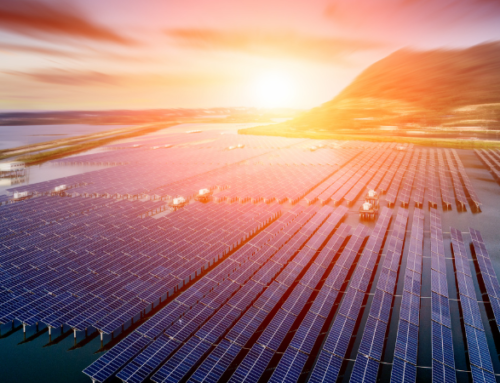In the evolving landscape of energy management, the concept of Energy as a Service (EaaS) is revolutionizing how businesses and organizations approach energy efficiency projects, net zero and carbon neutral initiatives, and energy management as a whole. This innovative business model allows companies to outsource their energy needs to energy service companies who finance, install, and manage energy-saving solutions. This model allows consumers easier access to energy technologies and projects without having to come out of pocket for large sums of money. This article delves into how energy companies are pioneering this turnkey solution, offering energy solution service subscriptions that produce results and are scalable.
What Is Energy as a Service And How Does It Work?
Similar to Software as a Service, where technology companies rent their software products to end users on a subscription mode instead of selling the software outright, Energy as a Service operates in a similar fashion. With the emerging trends in energy technology, renewable energy, and the push for a cleaner planet, EaaS offers companies an inexpensive way to participate in the energy transition. Let’s explore some typical models for EaaS in more detail.
Shared Savings
Shared savings models have been around for a long time, but are really taking shape in the energy sector. A shared savings model can be used to finance energy efficiency projects, such as lighting retrofits, and allows consumers to have immediate positive cash flow on day one of the project. In this model, an energy services company will pay for the lighting project on behalf of the customer, calculate the total monthly savings generated from the project, and bill the customer a percentage of savings. Consumers benefit from not having to pay upfront for the lighting project and enjoy the benefits of the energy savings long term.
Solar as a Service
The solar industry is growing by leaps and bounds. But, solar for commercial buildings can be very expensive to install or finance. In an effort to make solar more accessible for all types of businesses, solar companies are offering Solar as a Service in the form of a lease or power purchase agreement (PPA). In a standard lease, the customer can make monthly payments to the solar company for the system in the same way you might lease a car. With a PPA, the solar company makes the investment in the solar arrays and sells the generated power back to the consumer at a fixed rate. Both of these vehicles allow commercial consumers to participate in solar without having to come up with large sums of capital.
Battery Storage as a Service
Although commercial energy storage systems, such as battery storage, can be very beneficial, they are expensive to install. Luckily for some commercial users, renewable energy companies are offering batteries on a subscription model. End users can build the battery system into a solar project or rent the battery directly from the energy company.
Energy Technologies
Some other forms of Energy as a Service include different energy technologies that are designed to make buildings more efficient and reduce costs. Some IoT tech products aim to make HVAC systems run more efficiently through the constant communication of networked thermostats. Other systems monitor energy consumption and market data and turn down motors when energy prices are high. These new technologies can save consumers tremendously; however, they are expensive to design, install, and maintain. With an EaaS model, commercial and industrial end-users can purchase energy software and technology on a subscription basis and pay for the system out of their savings.
EaaS Pros
Energy as a Service (EaaS) offers several advantages for businesses and organizations looking to optimize their energy use, reduce costs, and become sustainable. Here are some of the key benefits:
- No upfront capital investment
- Immediate positive cash flow and savings
- Transfer of risk to energy service company
- EaaS systems are very scalable across multiple facilities
- Ongoing maintenance and support from energy provider
- Achieve sustainability goals with no capital outlay
- Reach ESG targets and other environmental goals
EaaS Cons
On the flip side, there are several cons and downsides associated with EaaS solutions. Whether you are running a public company or a privately owned business, it’s best to be aware of these setbacks:
- Forfeiture of all financial incentives available to asset owners
- Long term contracts and commitments with service providers
- Higher cost of ownership over time
- One-sided service contracts in favor of providers
- Extreme dependency on energy service company
- Limited control and customization of the solution
- Risk that the energy asset will not perform
What Does This Mean For Energy Customers?
Energy customers can benefit handsomely by participating in an EaaS program. Prior to the adoption of this business model, customers were forced to come out of pocket or finance their energy projects. And, as technology has grown exponentially, many projects become obsolete quickly. With EaaS, customers do not assume any financial risk or the risk of the market. This allows companies to quickly implement new technologies, replace obsolete equipment with upgraded systems, and achieve energy goals without having to assume energy risk.
Want Help Exploring Energy as a Service For Your Business?
Diversegy is both an energy brokerage firm and service provider helping commercial, industrial, and municipal customers achieve their energy goals. Whether you are looking to explore your energy price options, develop an energy risk strategy, or want help exploring energy technologies through an EaaS model, we can help. Our team of energy professionals has over 100 years of combined experience in the energy markets. Contact us today to set up an appointment to learn more.



